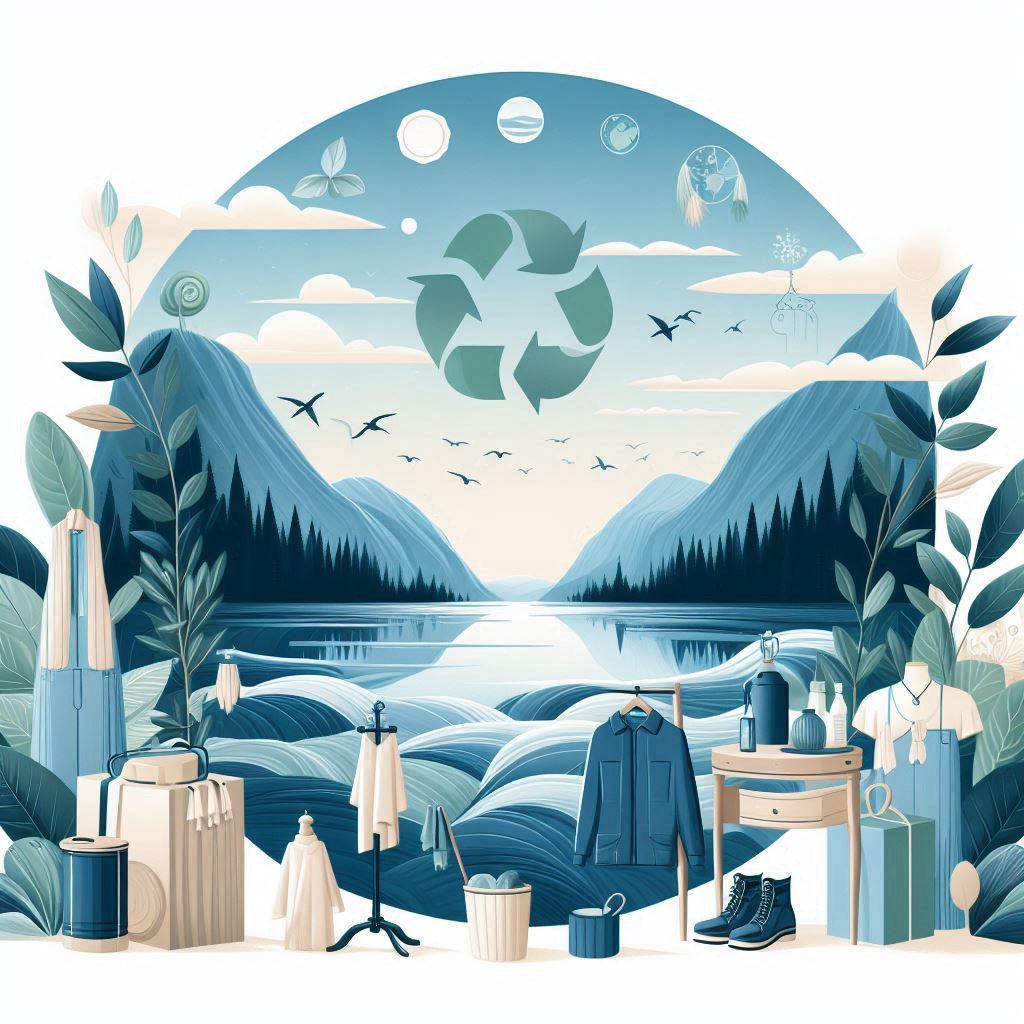The global fashion industry has long been synonymous with excess and waste. With its relentless pursuit of fast-changing trends, it depletes resources, exploits labor, and contributes significantly to environmental degradation. But there’s a silver lining: the rise of circular fashion, which focuses on reducing waste by extending the lifecycle of garments. Among the pioneers championing this movement is Vestiaire Collective, a leading luxury resale platform that epitomizes the synergy between sustainable fashion and innovation.
Vestiaire Collective is more than a marketplace for pre-loved luxury items; it’s a transformative force redefining how we consume fashion. By focusing on sustainability, the platform offers a model where style, ethics, and the environment coexist harmoniously.
Table of Contents
- Understanding Circular Fashion
- Vestiaire Collective’s Commitment to Circularity
- Concrete Steps Taken by Vestiaire Collective
- The Secondhand Shopping Boom and Its Role in Circularity
- The Future of Sustainable Fashion: Vestiaire Collective’s Vision
- FAQ Section
- Conclusion
Understanding Circular Fashion
Circular fashion reimagines the traditional “take-make-dispose” model. Instead, it promotes a closed-loop system where garments are reused, repaired, and eventually recycled to minimize waste. This approach challenges the notion of disposable fashion and shifts the focus toward longevity and sustainability.
Key Benefits of Circular Fashion:
- Waste Reduction: By keeping garments in circulation longer, fewer textiles end up in landfills.
- Resource Conservation: Circularity reduces the need for raw materials like water, cotton, and energy.
- Pollution Control: It minimizes the harmful emissions and toxic waste from conventional textile manufacturing.
Platforms like Vestiaire Collective have become instrumental in making second-hand fashion mainstream, proving that preloved clothing can be both sustainable and aspirational.
Vestiaire Collective’s Commitment to Circularity
At its core, Vestiaire Collective aims to revolutionize the fashion industry through circular fashion. Their mission is underscored by their 2025 Circularity Report, which highlights efforts to reduce environmental impact, foster sustainability, and challenge the fast fashion narrative.
Key Highlights of Vestiaire Collective’s Circularity Report:
- Reduction in carbon emissions through optimized logistics like local shipping.
- Minimizing waste with sustainable packaging solutions.
- Research into consumer attitudes, revealing growing awareness about the environmental costs of fast fashion.
These efforts reflect the platform’s proactive role in driving sustainable fashion and inspiring meaningful change.
Concrete Steps Taken by Vestiaire Collective
Vestiaire Collective’s sustainability efforts extend beyond rhetoric. Here’s how they’re leading the charge in circular fashion:
Banning Ultra-Fast Fashion
In a bold move, Vestiaire Collective became the first resale platform to ban ultra-fast fashion brands. This decision aligns with their mission to prioritize durable, high-quality garments over disposable trends. By doing so, they’re guiding consumers toward mindful shopping habits while sending a strong message about the detrimental impact of ultra-fast fashion on the planet.
This policy also challenges other platforms to reconsider their roles in perpetuating the fast fashion cycle. While implementation may vary across markets, Vestiaire Collective has set a new standard for accountability.
Partnerships for Resale as a Service
To expand its impact, Vestiaire Collective collaborates with brands to integrate Resale as a Service (RaaS) into their business models. This initiative empowers brands to offer pre-loved items directly to consumers, blending luxury with sustainability.
Benefits of RaaS:
- Reduces textile waste.
- Creates new revenue streams for brands.
- Attracts eco-conscious customers seeking sustainable options.
By embedding resale into their operations, brands can embrace sustainable fashion without sacrificing their business objectives.
Empowering the Community
Vestiaire Collective’s success is fueled by its vibrant community of fashion enthusiasts. They encourage their members to adopt a “buy less, buy better” mindset, prioritizing quality over quantity.
The platform’s Fashion Activist badge recognizes members who actively contribute to circular fashion by buying and selling pre-loved items. This gamified initiative fosters a sense of responsibility and motivates users to embrace sustainability.
Transparency and Accountability
Transparency is a cornerstone of Vestiaire Collective’s ethos. Their Declaration of Non-Financial Performance (DNFP) sets a high benchmark for corporate accountability by detailing their environmental and social initiatives.
Why Transparency Matters:
- Builds consumer trust.
- Inspires other brands to adopt similar practices.
- Demonstrates a genuine commitment to sustainability.
The Secondhand Shopping Boom and Its Role in Circularity
The rise of second-hand fashion represents a monumental shift in consumer behavior. Platforms like Vestiaire Collective are at the forefront, making it easier than ever to buy and sell pre-loved items. This movement is fueled by:
- Growing awareness of fast fashion’s environmental impact.
- A desire for unique, high-quality pieces at accessible prices.
- The convenience of digital marketplaces.
By integrating sustainability into their core operations, resale platforms are transforming how we perceive and consume fashion.
The Future of Sustainable Fashion: Vestiaire Collective’s Vision
Vestiaire Collective envisions a world where sustainable fashion is the norm rather than the exception. Their commitment to circular fashion serves as a blueprint for other companies, proving that profitability and sustainability can go hand in hand.
As they continue to innovate, Vestiaire Collective exemplifies how businesses can inspire consumers to prioritize the planet without compromising on style.
FAQ Section
What is Vestiaire Collective’s stance on fast fashion?
Vestiaire Collective has banned ultra-fast fashion brands from its platform, advocating for durable and sustainable alternatives.
Does Vestiaire Collective authenticate all items?
Yes, every item undergoes a rigorous authentication process to ensure quality and authenticity.
What is the Fashion Activist badge?
The badge is awarded to members who actively buy and sell pre-loved items, encouraging participation in the circular fashion movement.
How does Vestiaire Collective support brands in sustainability?
Through Resale as a Service, they enable brands to incorporate resale into their business models, promoting sustainable fashion.
Conclusion
The future of fashion lies in sustainability, and platforms like Vestiaire Collective are paving the way. By promoting circular fashion, banning ultra-fast brands, and fostering community engagement, they are proving that luxury and ethics can coexist. As consumers, we hold the power to drive change by supporting platforms that align with our values. Together, we can redefine fashion and create a more sustainable future.

